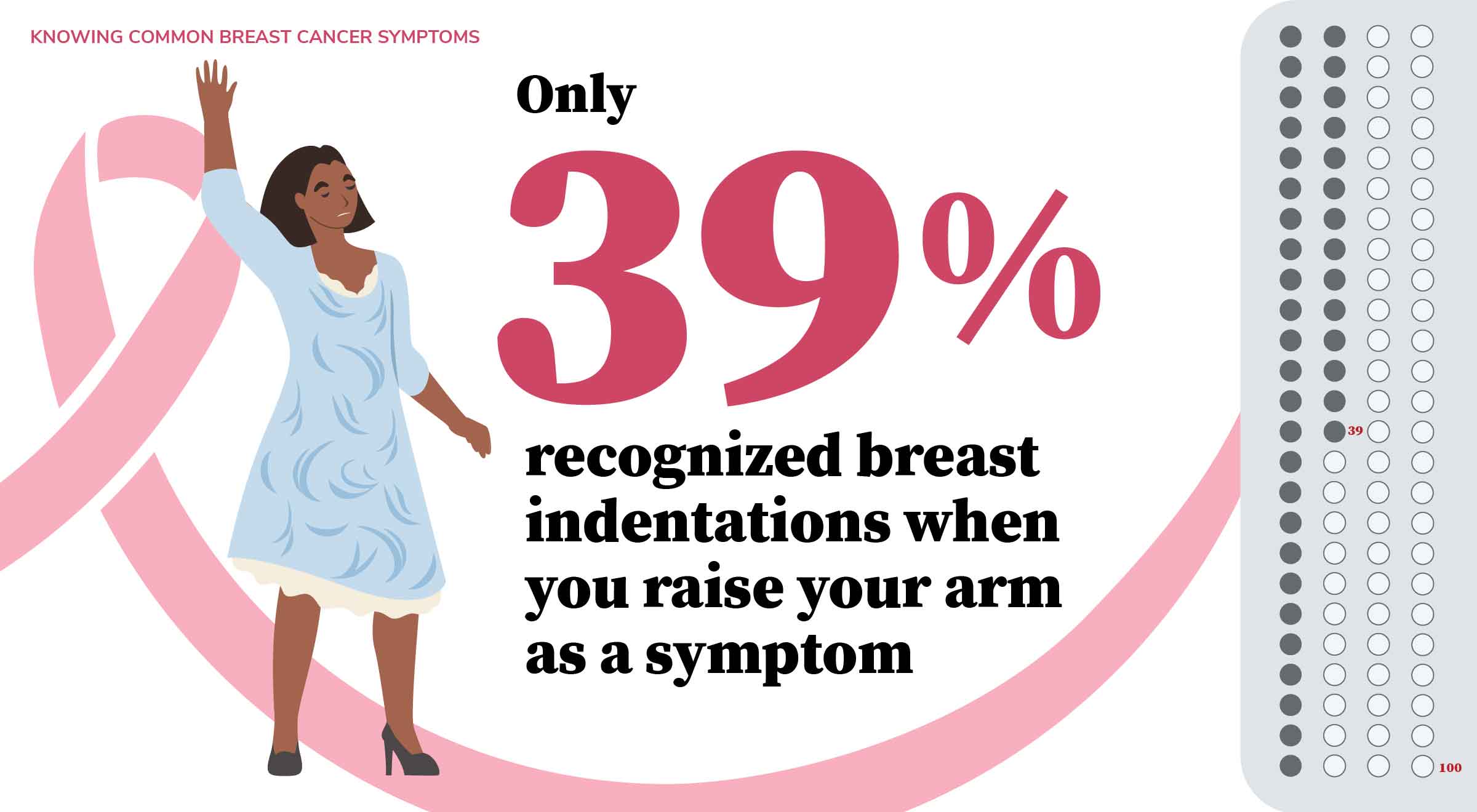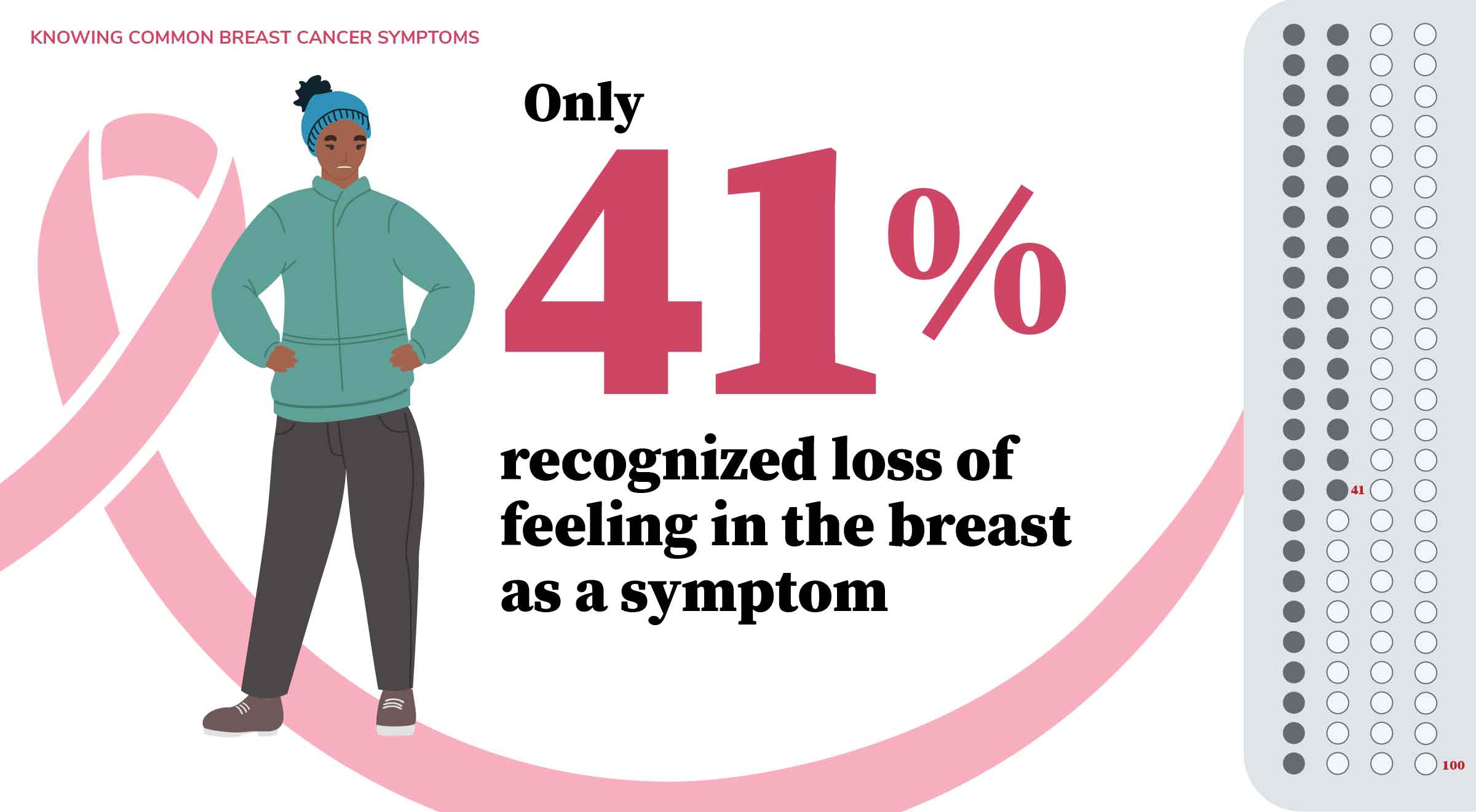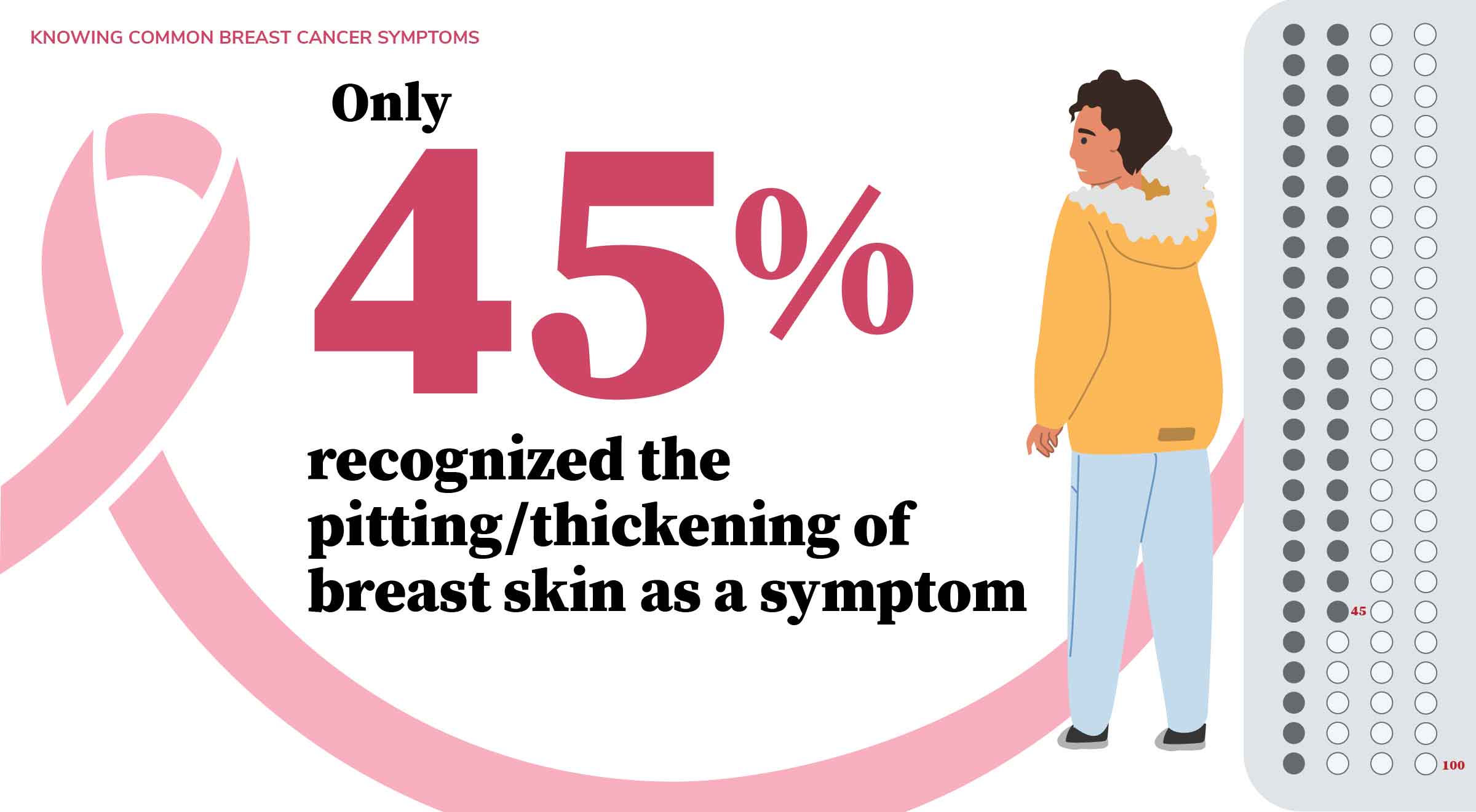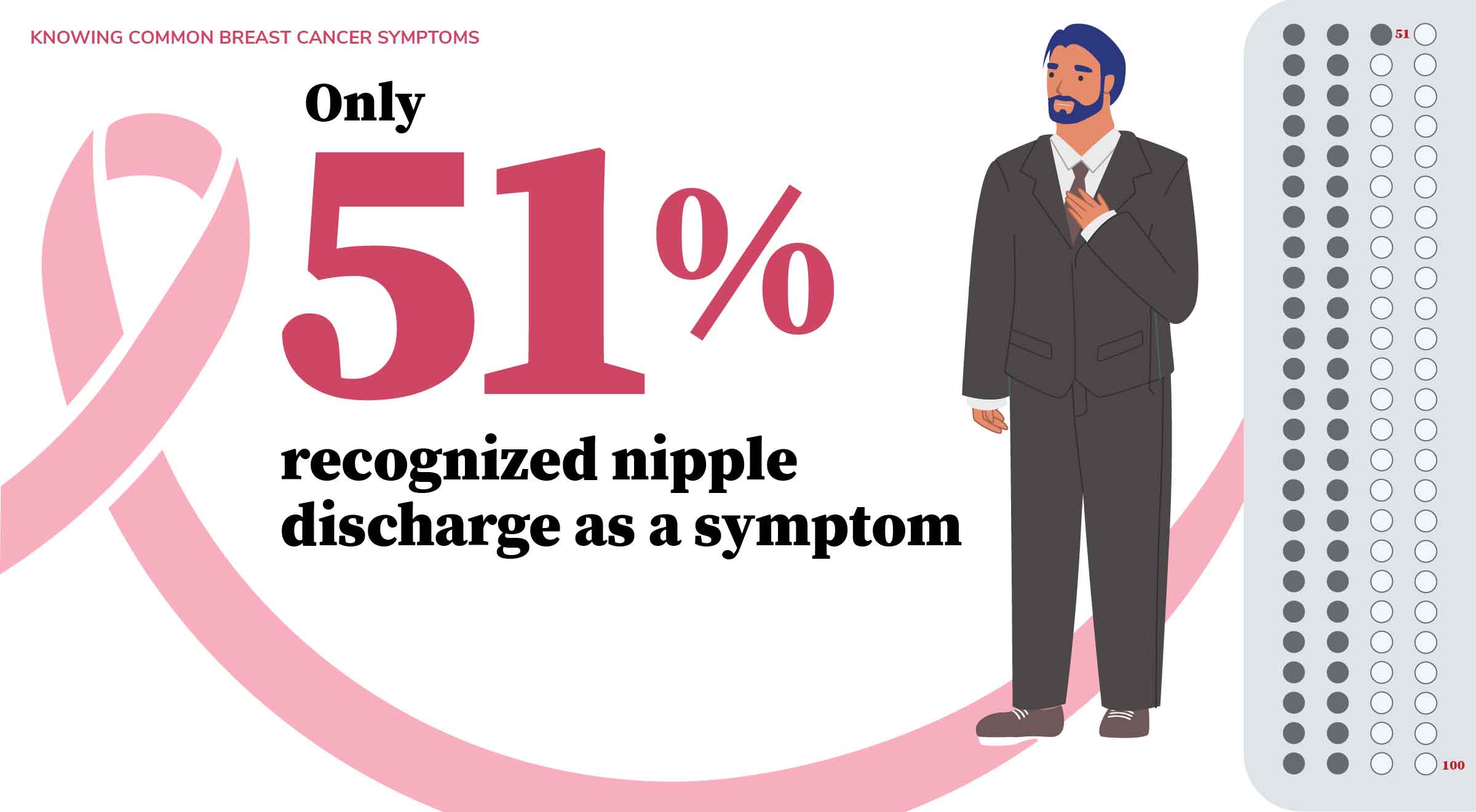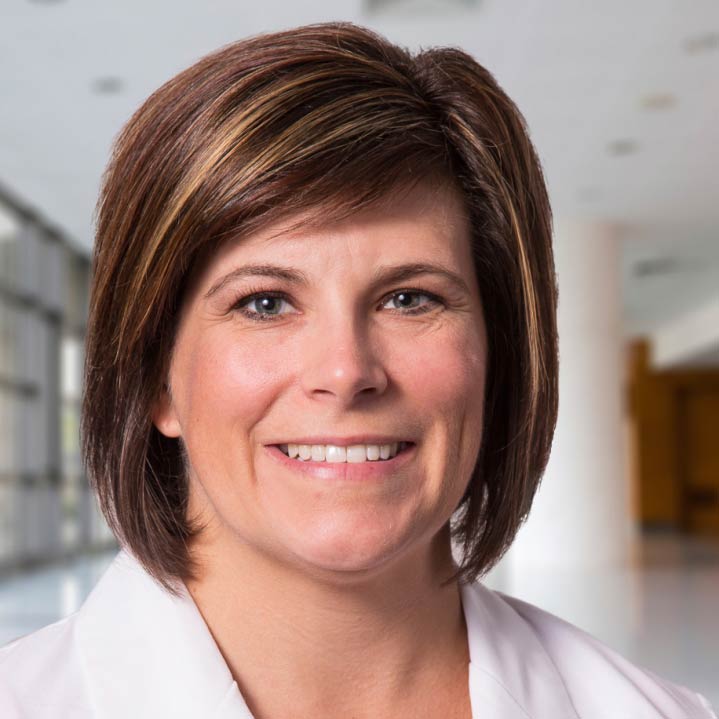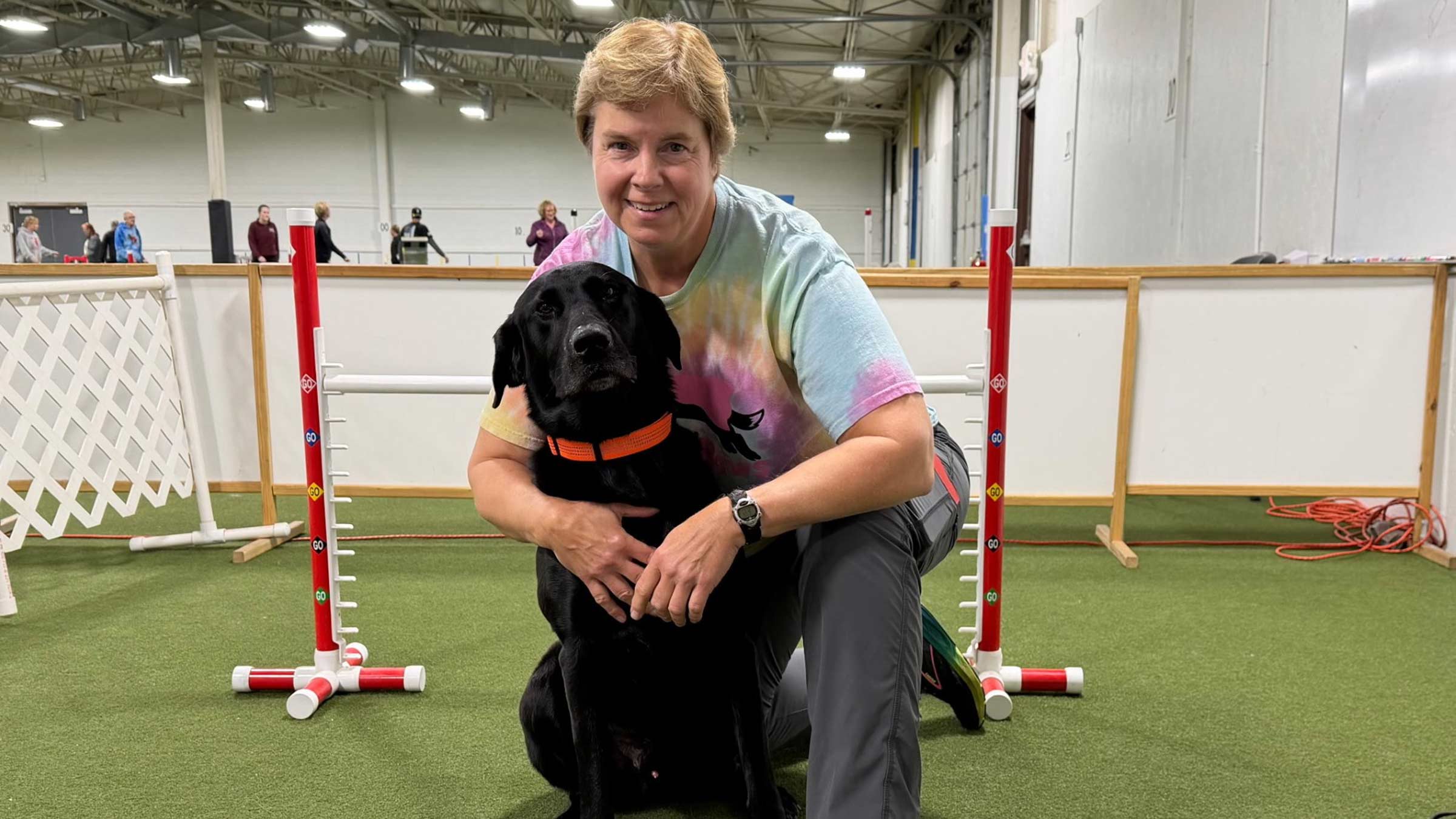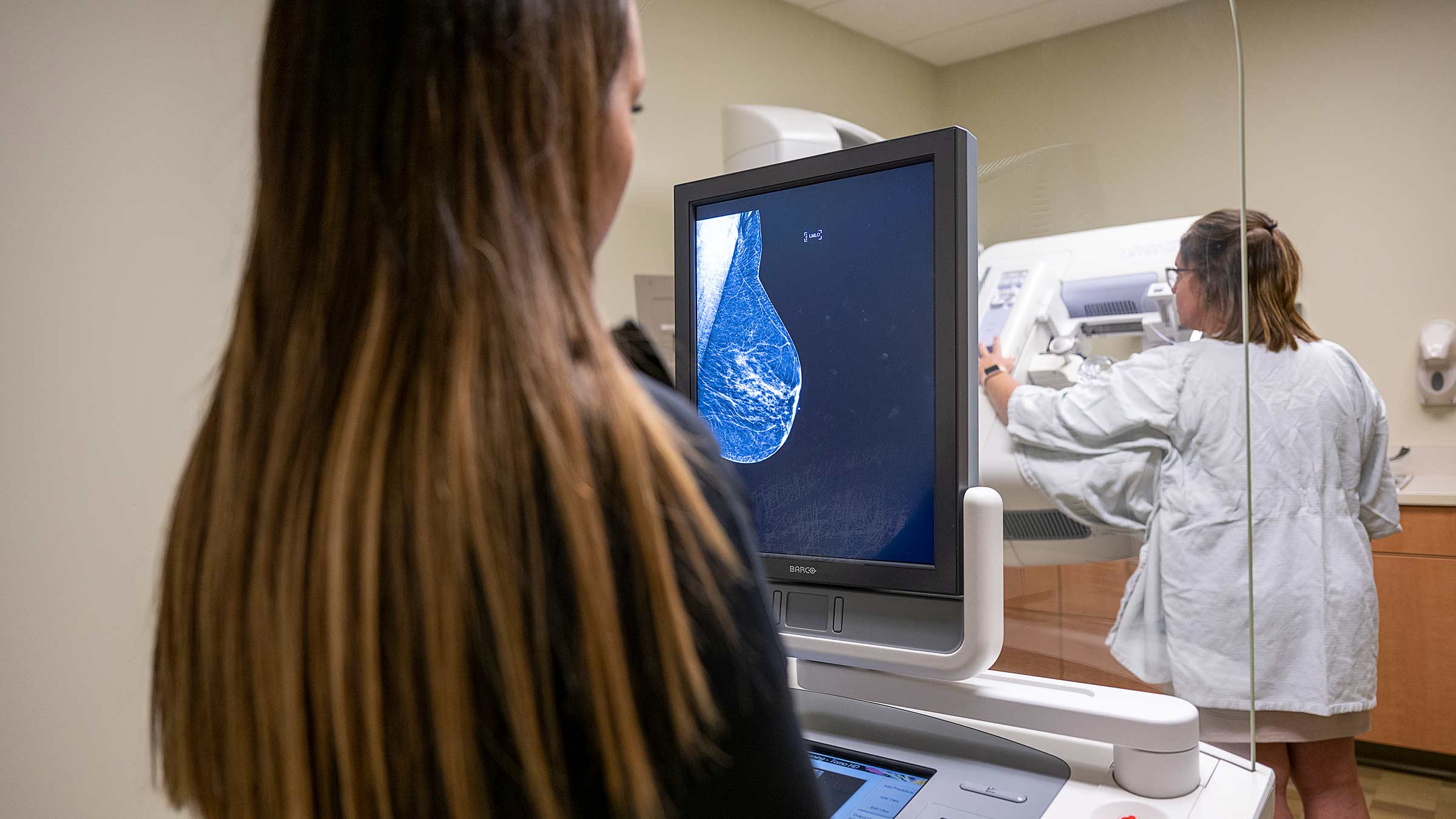
Each year, 240,000 women are diagnosed with breast cancer in the United States, according to the Centers for Disease Control and Prevention (CDC). It remains the second leading cause of death among women.
While a majority of adults (93%) recognize a lump as one of the more common signs of breast cancer, there are actually a number of breast changes that could indicate early symptoms. According to a national consumer survey commissioned by The Ohio State University Comprehensive Cancer Center – Arthur G. James Cancer Hospital and Richard J. Solove Research Institute (OSUCCC – James), less than half recognize other common symptoms associated with the disease.
Breasts change throughout a person’s lifetime. It’s important to know your breasts and routinely complete a self-exam. These symptoms can indicate different types of breast cancer:
1 A red, swollen breast that’s warm to the touch
This happens most commonly due to infection or systemic inflammation. In some cases, your skin could resemble the texture of an orange peel. That dimpled texture could be a symptom of inflammatory breast cancer, which is a rare, aggressive form of breast cancer. To determine the cause of your symptom, you should contact your general health care provider for evaluation and diagnosis.
2 The nipple starts inverting, pulling inward
As a tumor grows within the breast, it will sometimes tug part of the breast tissue toward the tumor, causing that nipple to become inverted.
3 Scaly, dry skin around the nipple
This can resemble a rash on the nipple, which may become red and irritated. The nipple may look like it’s scabbed over. This can be associated with benign causes, such as contact dermatitis or infection; however, it also can be a sign of a subtype of breast cancer called Paget’s disease, which commonly only involves the nipple. A specialist will schedule additional imaging to determine whether it’s only the nipple or if cancer is also present within the breast.
4 Secretions other than milk from the nipple
While some women have milky discharge that’s not a cause for concern, spontaneously producing nipple discharge can be a breast cancer symptom. If the fluid is clear or bloody, it’s especially a cause for concern.
5 Swelling around the armpit or breast itself that creates a noticeable size difference
This can happen if the tumor extends into the armpit while rapidly growing. More commonly, there are lymph nodes in this area that are enlarging due to inflammatory changes associated with infection, allergies and recent vaccinations in that arm. Although our breasts are naturally different sizes, a noticeable change in one breast size may be a cause for concern and should be evaluated by a health care provider.
What to do if you experience these symptoms
The symptoms above could mirror symptoms of other inflammatory illnesses or underlying infections that aren’t cancer. If you develop these symptoms before an annual exam, make an appointment to get checked.
The critical importance of mammograms
Aside from paying attention to physical symptoms, it’s incredibly important to get a mammogram each year beginning at age 40 — or earlier, if you have an increased risk due to a family history or genetic mutation. Most cancers are diagnosed in older women, but about 9% of new cases are found in women under the age of 45, according to the CDC.
Men can also be susceptible to breast cancer, but it’s at a much lower rate compared to women. Nationally, about 2,100 men are diagnosed each year, according to the CDC. One in 8 women will develop breast cancer at some point in their lives.
For people who are able to physically detect a lump in their breast, that mass is typically two centimeters or greater in size. Mammograms can detect tumors that are millimeters in size, long before they’re noticeable.
Some people have no outward physical symptoms of breast cancer. In fact, sometimes there’s no lump, but there’s still cancer. That’s why getting screened is so important.
Your health care provider will collect your medical history and may send you to get breast imaging, such as a diagnostic mammogram or an ultrasound, if something is found.
The earlier we catch breast cancer, the better chance you have of a successful recovery.
OSUCCC – James is home to a high-risk breast cancer program. A specialized team of experts can help you determine your risks and offer genetic counseling. And, as a National Cancer Institute-designated comprehensive cancer center, Ohio State has about 30 clinical trials underway for many types of breast cancer, including inflammatory breast cancer. Patients have access to exclusive novel treatments.
Our hope is to change how we treat these cancers and stop them from being so aggressive. We want all patients to live long, healthy lives.
*This study was conducted on behalf of The Ohio State University Wexner Medical Center/OSUCCC – James by SQL Server Reporting Services (SSRS) on its Opinion Panel Omnibus platform.

The choice for cancer prevention is clear
Schedule your mammogram with the experts at The James, who understand there is no such thing as a routine mammogram.
Schedule Now




